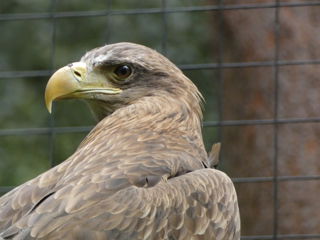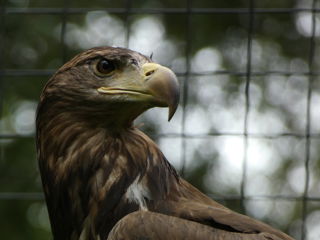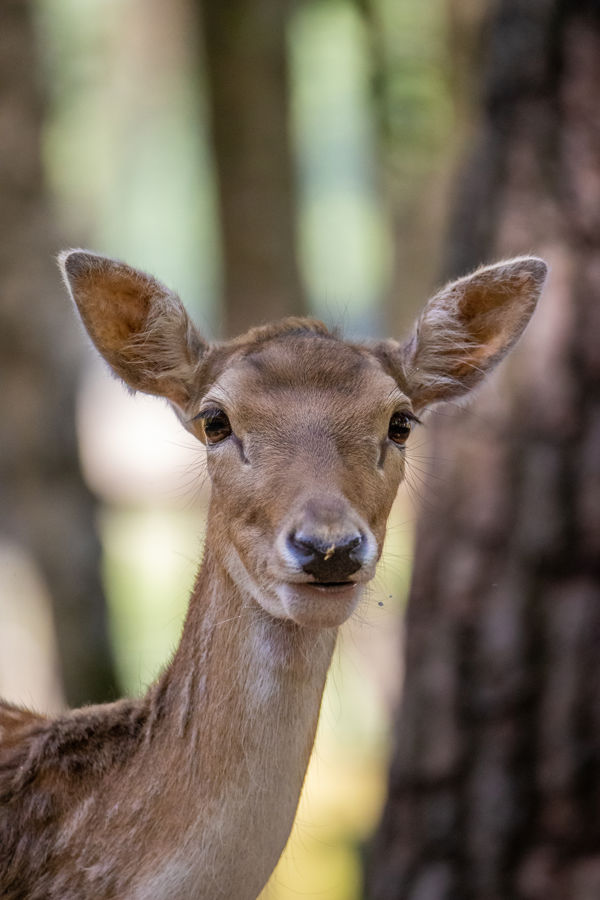White-tailed sea eagle

General information
This impressive bird of prey, with a wingspan of up to 2.4m, is the largest native bird to the UK. As an adult, they will have a bright yellow beak, piercing yellow eyes and bright white feathers on their head, neck and tail. Juveniles will have a mixture of brown and white feathers, slowly becoming darker until they grow into their adult colouration.
After reaching sexual maturity at 5 years old, a pair will form a monogamous bond for life and breed in the same territory each year. Mature eagles are extremely territorial and disputes can be fatal. The female lays up to three eggs in March to April and incubates them until they hatch after 38 days. The chicks begin to feed themselves between five and six weeks of age, and fledge when they are about 10-11 weeks old.
After becoming extinct in the UK in the 20th century, the species has experienced a remarkable conservation comeback in the UK and currently holds Amber status under the Birds of Conservation Concern classification, indicating they remain a species requiring ongoing conservation attention. Following successful reintroduction programmes, White-tailed Sea Eagles can now be spotted in Scotland's Isle of Mull, Isle of Skye, and Loch Sunart, as well as the recently established population on the Isle of Wight.

Latin name - Haliaeetus albicilla
Class - Aves
Order - Haliaeetus
Family - Accipitridae
IUCN Status - Least concern (population rising)
Habitat - Coastal, wetland and woodland areas
Distribution - Eurasia
Average Lifespan
20 to 25 years in the wild. 40 years in captivity
Threats
Persecution, habitat loss and pesticide poisoning.
Fun Fact
In the Gaelic language the poetic term for the white-tailed eagle is Iolaire sùil na grèine, which translates to ‘the bird with the sunlit eye’.
Our Residents
Our two resident white-tailed sea eagles arrived on the 7th May 2025. The brother and sister, Zoomer and Zephyr, had never been on public display before, and due to their nervous nature, a long slow introduction to being on display took place. Now settled, they can be seen in their custom built enclosure in our Wallaby Wood.

Sign up to our newsletter
Join our mailing list in order to keep up to date with park news and special offers.





